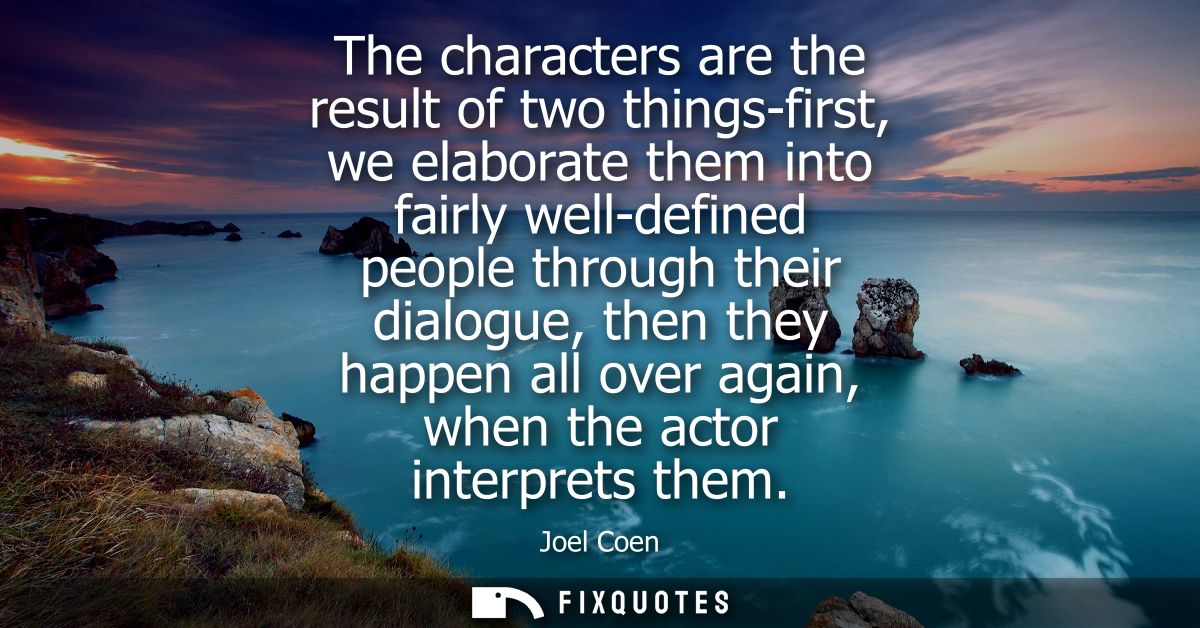"The characters are the result of two things-first, we elaborate them into fairly well-defined people through their dialogue, then they happen all over again, when the actor interprets them"
About this Quote
Joel Coen’s words illuminate the layered nature of fictional character creation in film. The process begins with the writers, who meticulously shape the characters through spoken words and exchanges. Dialogue acts as the main vessel for defining personalities, relationships, motivations, and conflicts. Through conversation, writers provide dimensions: the directness or hesitance of a response, the subtext behind a question, or the rhythm of a verbal exchange. Each line helps sketch the boundaries of who the character seems to be, a mosaic built through choices in tone, vocabulary, and reaction.
Yet, this act of creation through writing is only the first stage. When the script reaches the hands of an actor, something transformative occurs. The written character, clear on the page but still abstract in existence, enters a new realm. The actor reads between the lines, sensing energy beyond the literal text. Through voice, posture, gesture, and timing, the actor breathes individuality into the role. The result is sometimes surprisingly different from what existed in the mind of the writer, the same dialogue acquires new shades of meaning, emotional depth, and even humor or vulnerability not immediately apparent. An actor might emphasize a word unexpectedly or bring context from their own interpretation, reshaping the audience’s understanding.
Thus, characters are not static creations but evolving entities shaped collaboratively. First, they are constructed intellectually through careful crafting of dialogue. Then, they are reinvented in performance, where interpretation, instinct, and nuance bring them to life. This confluence forms the soul of compelling storytelling in film. The dynamic partnership between writing and acting ensures that characters are both clearly envisioned and endlessly variable, resulting in complex, living people who linger in the minds of the audience. The process is cyclical and creative, suggesting that every character is never quite finished, always subject to rediscovery.
More details
About the Author

